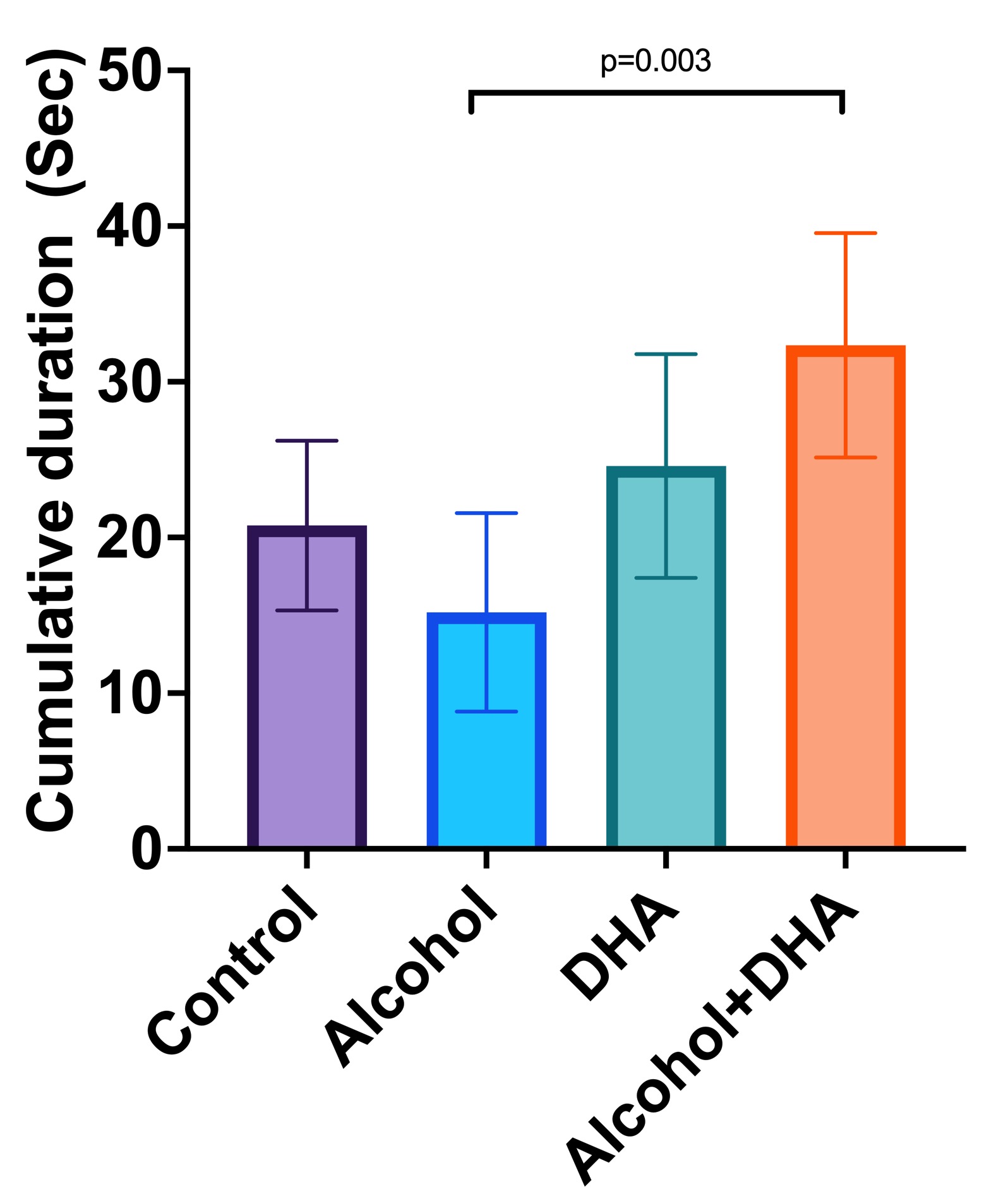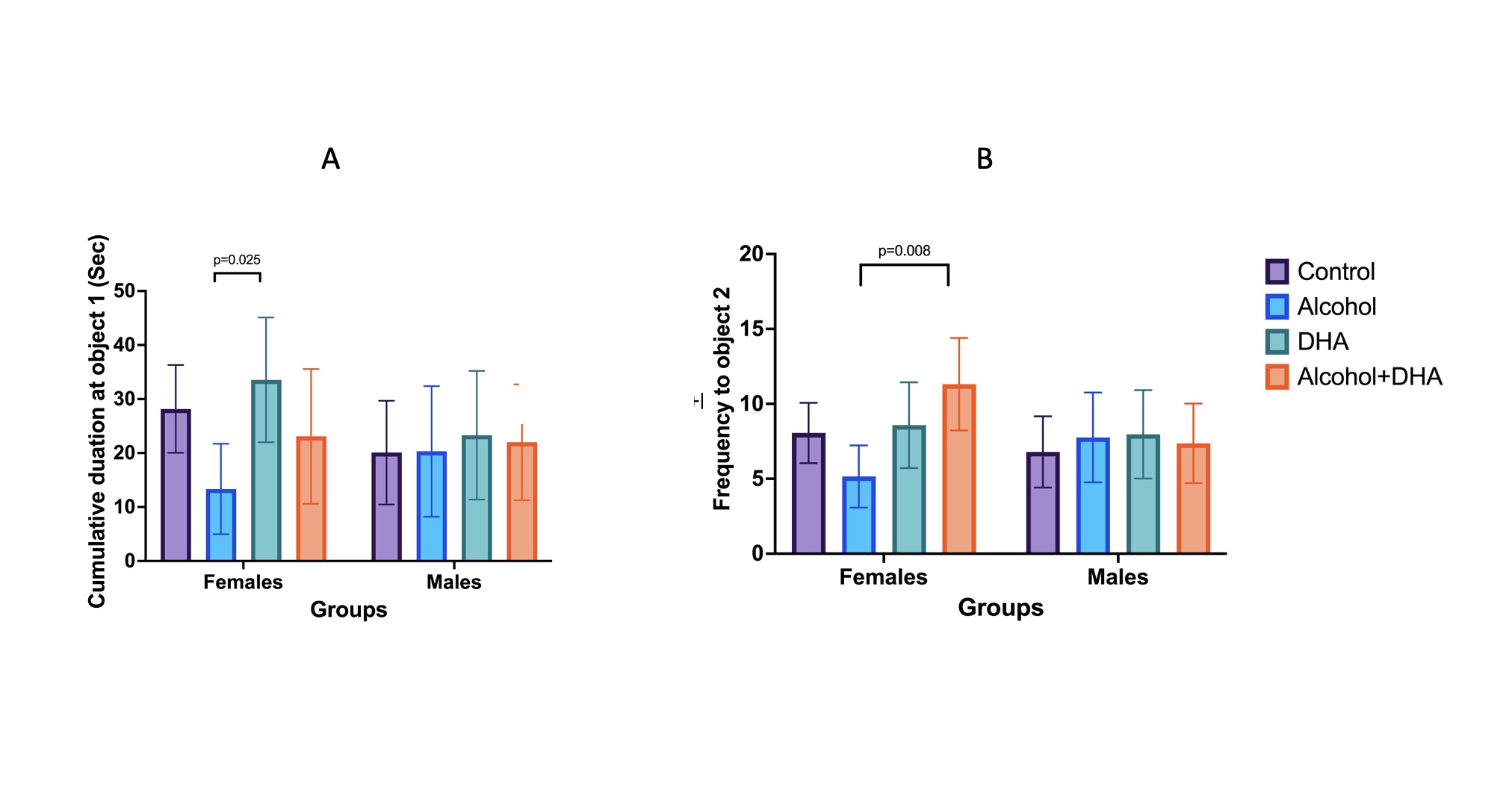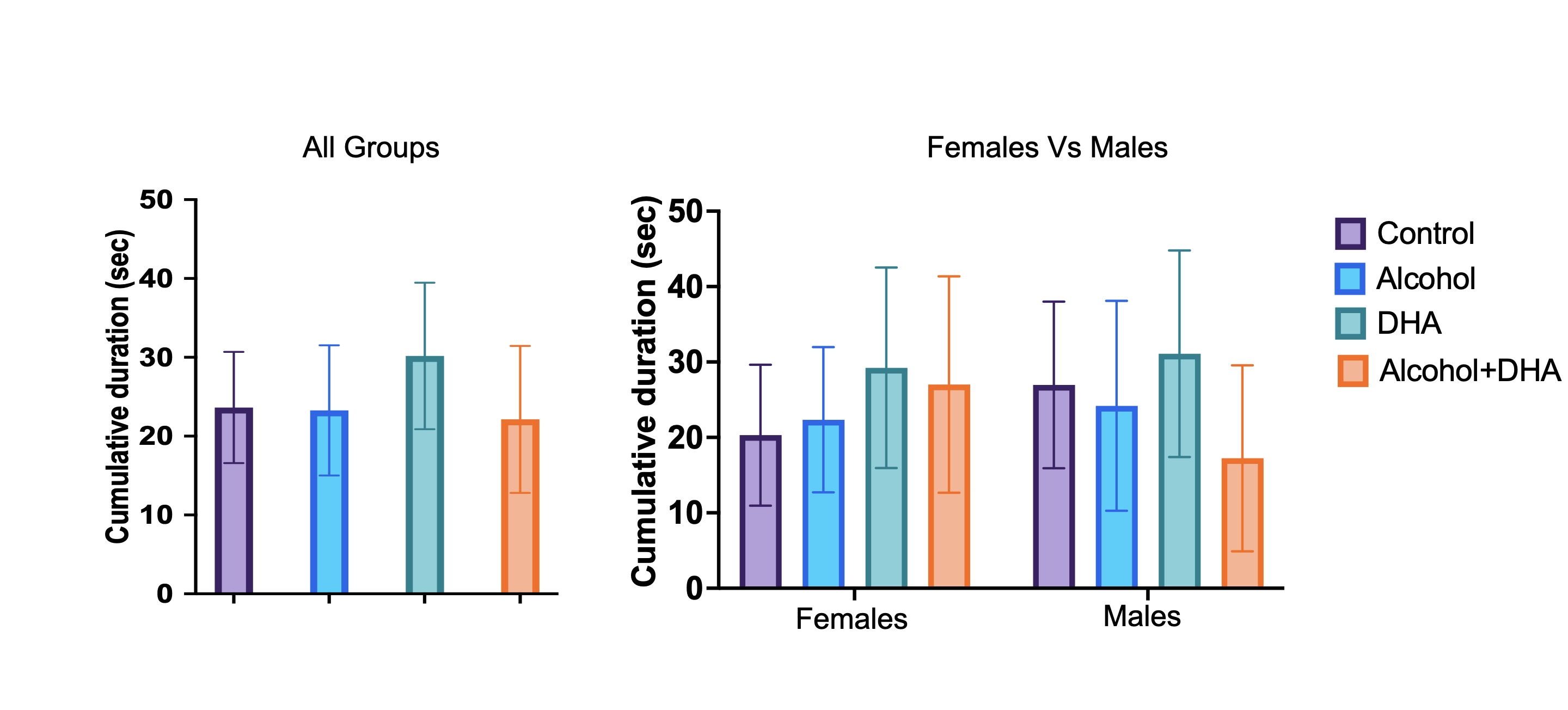Neonatal Neurology: Pre-Clinical Research
Neonatal Neurology 9: Preclinical 3
43 - Treatment of Alcoholic, Pregnant Rats with Docosahexaenoic acid (DHA) Improves Exploratory Behavior but not Cognition in their Offspring.
Publication Number: 43.435

Praveen kumar Boddu, MBBS, MD (he/him/his)
Neonatal-Perinatal Medicine Fellow
Children's Hospital of Michigan
Livonia, Michigan, United States
Presenting Author(s)
Background:
Alcohol abuse during pregnancy leads to Fetal Alcohol Spectrum Disorder (FASD), a leading cause of mental disability in children. Brain inflammation from alcohol, unresolved by the resolution lipid mediators (RLM), may be a cause of FASD. DHA is a precursor of RLM. In our previous study, prenatal DHA supplementation of alcoholic dams significantly increased the brain RLM of their offspring. Whether Increasing brain RLM with DHA will improve exploratory behavior and cognition of the pups remain to be explored.
Objective:
We propose that 1) The offspring of rats that consume ethanol during pregnancy will display deficits in exploratory behavior and cognition which will be attenuated by co-administration of DHA, and 2) The deficits in the offspring may differ in male and female pups.
Design/Methods:
Timed-pregnant Sprague Dawley rats (dams) were randomized into 4 treatment groups:
Control (maltose/dextrin), Ethanol (3 g/kg/d), DHA (1500 mg/k/d) and Ethanol (3 g/k/d) + DHA (1500 mg/k/d). Dams were treated from gestational day 8 to 1 week postdelivery. At 4 weeks postnatal, exploratory behavior and cognition were assessed in 114 pups (50 males, 64 females) using the Novel Object Recognition Test (NOR). Briefly, p</span>ups were initially allowed to explore 2 identical objects (1 and 2) (“known”). Thereafter, pups were presented with one of the known objects + a new (‘novel’) object. Rats will naturally explore and spend more time at the novel object. 1. Exploratory behavior (Mean ± SE): 2. Novel object. Alcohol showed less frequent, but not statistically different, number of visits to the novel object compared to DHA and Alcohol+DHA(Fig 3). Exploration of a known object was significantly increased in female (but not male) offspring of alcohol-exposed rats treated with DHA. All cohorts displayed an apparent deficit in memory (no preference for exploration of a novel object) that was not altered by DHA treatment.
Results:
1). Cumulative duration at object 2 in the Alcohol group (15.19 ± 3.21) was lower compared to Control (20.77 ±.75), DHA (24.59 ± 3.62) and Alcohol+DHA (32.35 ± 3.63). In Alcohol vs Alcohol+DHA groups, p=0.003 (Fig. 1).
2). When compared to Alcohol in Female pups i) DHA (10.73 ± 1.67) showed more frequent visits and longer cumulative duration (33.55 ± 5.83) at Object 1 (Fig 2A), and ii) Alcohol+DHA showed more frequent visits (11.30 ± 1.56) and longer cumulative duration (38.29 ± 5.59) at Object2 (Fig 2B).
Conclusion(s): 


